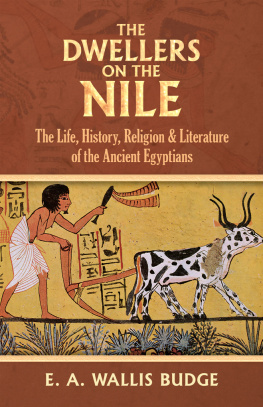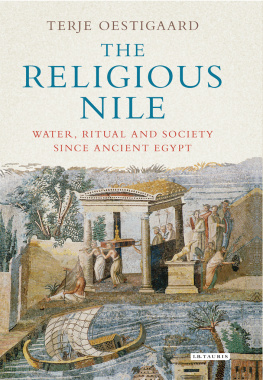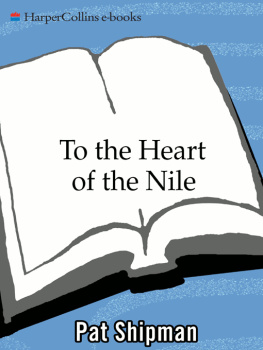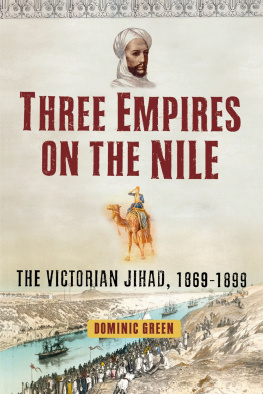Explorers of the Nile
by the same author
NON-FICTION
Livingstone
Baden-Powell
Stanley
Swimming with my Father
FICTION
Somewhere Beyond Reproach
Cushings Crusade
The Missionarys Wife
Deep Water
Explorers of the Nile
The Triumph and Tragedy of a
Great Victorian Adventure
TIM JEAL
Yale
UNIVERSITY PRESS
New Haven & London
First published 2011 in the United States by Yale University Press and in Great Britain by Faber and Faber Limited.
Copyright 2011 by Tim Jeal.
All rights reserved.
This book may not be reproduced, in whole or in part, including illustrations, in any form (beyond that copying permitted by Sections 107 and 108 of the U.S. Copyright Law and except by reviewers for the public press), without written permission from the publishers.
Yale University Press books may be purchased in quantity for educational, business, or promotional use.
For information, please e-mail sales.press@yale.edu (U.S. office) or sales@yaleup.co.uk (U.K. office).
Typeset by Donald Sommerville.
Printed in the United States of America.
Library of Congress Control Number: 2011933872 ISBN 978-0-300-14935-7 (hardcover : alk. paper)
A catalogue record for this book is available from the British Library.
This paper meets the requirements of ANSI/NISO Z39.48-1992 (Permanence of Paper).
10 9 8 7 6 5 4 3 2 1
To my daughters,
Jessica, Lucy and Emily
Contents
List of Illustrations
Kahala and other young Baganda women, an engraving in Spekes Journal
Livingstones remains carried through Southampton, as seen in the Illustrated London News 25 April 1874
Milton Obote ( Getty Images)
List of Plates
A medieval reconstruction of Ptolemys map of the world, in The Discovery of the Nile by Gianni Guadalupi, from a map in the Vatican Library, Rome
Richard Burton depicted as an Afghan peddler in Isabel
Burtons The Life of Captain Sir Richard F. Burton (1893).
John Speke and James Grant at Mutesas court. From Spekes Journal of the Discovery of the Source of the Nile.
A naked Mutesa drawn by Speke in one of his sketchbooks, now at the Royal Geographical Society. RGS
Speke portrayed standing at the Ripon Falls source, by the artist James Watney Wilson. RGS
African birds drawn by Speke. RGS
Samuel Baker and Florence von Sass in a storm on Lake Albert, an engraving from Samuel Bakers The Albert Nyanza (1874).
Obbo warriors perform a war dance, a water colour by Samuel
Baker, in the Baker family collection.
Bakers sketch of himself in danger of being trampled by an elephant, in the Baker family collection.
James Gordon Bennett Jr., editor of the New York Herald, by Nemo (Constantine von Grimm), chromolithograph, Vanity Fair, 15 November 1884.
Stanley and his men crossing the Makata swamp, a magic lantern slide in a private collection.
Hats worn by Livingstone and Stanley at the time of their meeting, now in the RGS.
Stanley watches a phalanx dance by Chief Mazambonis warriors, during the Emin Pasha Relief Expedition, an illustration in Stanleys In Darkest Africa (1890).
Livingstones remains being carried to the coast by his men, a magic lantern slide from The Life and Work of David Livingstone, published by the London Missionary Society (1900).
David Livingstone in 1866. London Missionary Society Richard Burton posing in Arab clothes, by Ernest Edwards, April 1865, in David Livingstone and the Victorian Encounter with Africa. National Portrait Gallery
Richard Burton in his tent in Somaliland, a photograph in Isabel
Burtons The Life of Captain Sir Richard F. Burton (1893).
John Hanning Speke as a young officer in India, an oil painting reproduced in Harry Johnstons The Nile Quest (1903).
Speke before his great journey, a photograph in Mary Lovells A Rage to Live (1998).
Spekes memorial in Kensington Gardens.
Samuel Baker in his African hunting attire, Baker family collection.
Florence von Sass before her marriage to Samuel Baker, from Richard Halls Lovers on the Nile.
The Royal Geographical Society outing during the meeting of the British Association in Bath, 1864, a photograph in the David Livingstone Centre.
Henry Stanley aged twenty-eight, two years before he found Dr Livingstone, a photograph in the estate of the late Quentin Keynes.
Chuma and Susi, Dr Livingstones servants. London Missionary Society
Some of Stanleys principal Wangwana carriers on his great trans-Africa journey, a photograph in the Royal Museum of Central Africa.
Karl Peters, the German explorer and imperialist. Getty Images
Princess Salme, sister of the Sultan of Zanzibar. Authors Collection
Captain T. M. S. Pasley RN. Authors Collection
James S. Jameson, a photograph in The Story of the Rear-Column of the Emin Pasha Relief Expedition, ed. Mrs J. S. Jameson (1890).
Major Edmund Barttelot, a photograph in W. G. Barttelots The Life of Edmund Musgrave Barttelot (1890).
Stanley (aged forty-six) and Anthony Swinburne, a photograph in the Royal Museum of Central Africa.
Captain Frederick Lugard soon after claiming Uganda for Britain, a photograph in Margery Perhams Lugard: The Years of Adventure 1858-1898 (1956).
Kabarega of Bunyoro in old age, a photograph in Alan Mooreheads The White Nile (1960).
Henry Stanley in 1892 with his close friend Sir William Mackinnon of the Imperial British East Africa Company, a photograph in the Royal Museum of Central Africa.
Major-General Sir Horatio Kitchener at the time of the battle of Omdurman, a photograph in Philip Magnuss Kitchener: Portrait of an Imperialist (1958).
Marchands emissaries approach Kitcheners ship, a photograph in J. O. Udals The Nile in Darkness: A Flawed Unity 18631899 (2005).
Commandant Jean-Baptiste Marchand, from an oil painting in the Muse de lArme, Paris.
Sir Harold MacMichael, Britains top civil servant in Sudan 1926-33.
List of Maps
Introduction
In the middle of the nineteenth century the whereabouts of the Niles source was still the planets most elusive secret, as it had been since the days of the Pharaohs. When Alexander the Great was shown the temple of Ammon in Luxor, the first question he asked is said to have been: What causes the Nile to rise? Indeed, a longing to find answers to the twin mysteries of the location of the rivers source, and why it always flooded in summer rather than in winter, had drawn Alexander to Egypt as powerfully as any military, commercial or political reason. From 30 BC Egypt was ruled by Rome. A Roman proverb Facilius sit Nili caput invenire (It would be easier to find the source of the Nile) was still current in nineteenth-century Europe as a handy epithet to hurl at impractical dreamers of all sorts. In AD 66, the Emperor Nero surprisingly, a keen geographer had sent an expedition upriver, led by two centurions, with instructions to find the legendary headwaters. Two thousand miles from the Mediterranean (halfway between the rivers mouth and its unknown source), the centurions were defeated by an immense swamp extending for hundreds of miles. This was the mosquito-infested Sudd, where under the blazing sun a maze of shifting channels was blocked by floating islands of papyrus and interlaced aquatic plants.
Next page











